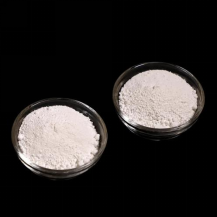
Nov . 21, 2024 06:49 Back to list
titanium dioxide factories
The Titanium Dioxide Industry An Overview of Factories and Production Processes
Titanium dioxide (TiO₂) is one of the most versatile and widely used white pigments in the world, renowned for its brightness, opacity, and ability to reflect UV light. Its applications span across various industries, making it a critical component in products such as paints, coatings, plastics, paper, and even food. Behind the ubiquitous presence of titanium dioxide lies a complex and industrially significant manufacturing process conducted in specialized factories around the globe.
Understanding Titanium Dioxide
Before delving into the factories that produce titanium dioxide, it's essential to understand its basic characteristics and applications. Titanium dioxide is a naturally occurring mineral extracted from ores such as ilmenite, rutile, and anatase. The substance comes in two primary forms anatase and rutile, with rutile being the most extensively used due to its superior properties in applications requiring high durability and weather resistance.
In addition to its pigmentary uses, titanium dioxide is highly valued in the formulation of sunscreens as it provides a physical barrier against harmful UV rays. Its non-toxic nature and high refractive index make it suitable for numerous other applications, including cosmetics, food colorants, and even in the pharmaceutical industry.
Titanium Dioxide Production Process
The production of titanium dioxide primarily occurs in two ways the sulfate process and the chloride process
. Each method has distinct characteristics and is selected based on factors like cost, desired product characteristics, and environmental regulations.1. Sulfate Process This traditional method involves the treatment of titanium ores with sulfuric acid. The process starts by dissolving ilmenite in sulfuric acid, leading to the formation of titanium sulfate. Post reaction, the titanium sulfate solution undergoes hydrolysis, precipitating titanium dioxide. The precipitate is then filtered, washed, and calcined (heated) to produce the final TiO₂ pigment.
titanium dioxide factories

2. Chloride Process In contrast to the sulfate method, the chloride process entails the use of chlorine gas to produce titanium tetrachloride from titanium ores. This titanium tetrachloride is then oxidized at high temperatures to yield titanium dioxide. The chloride process is generally considered more efficient, producing purer titanium dioxide and resulting in less waste.
Environmental and Safety Considerations
Titanium dioxide factories must adhere to strict environmental regulations due to the potential release of harmful byproducts during the production process. Both the sulfate and chloride processes generate waste materials that can be hazardous if not managed correctly. Therefore, manufacturers invest in advanced filtration and waste management systems to ensure compliance with environmental laws.
Safety within these factories is also paramount. Employees are at risk of exposure to dust and chemicals during the manufacturing processes. Thus, it is common for manufacturers to implement rigorous safety protocols, including protective gear, proper ventilation systems, and regular safety training.
Global Production Landscape
The titanium dioxide market is dominated by a few key players, with factories strategically located in regions abundant in raw materials. Major producers include companies in the United States, Europe, and Asia, particularly China, which has rapidly expanded its production capacity over the past two decades. These factories not only drive local economies but also fulfill the global demand for titanium dioxide across various sectors.
Conclusion
The titanium dioxide factories play a pivotal role in supplying a crucial component of numerous everyday products. The combination of advanced production techniques and adherence to environmental and safety standards underscores the importance of innovation in this industry. As technological advancements continue to evolve, the titanium dioxide sector is positioned for continued growth, adapting to the ever-changing landscape of industrial applications and consumer demands.
-
AI-Enhanced Titania Tio2 | High-Performance Solutions
NewsAug.04,2025
-
Titanium Dioxide TiO2 Enhanced by GPT-4 Turbo for Industry
NewsAug.03,2025
-
Advanced Titania TIO2 Solutions with GPT-4 Turbo AI Tech
NewsAug.02,2025
-
Titania TiO2 Enhanced with GPT-4 Turbo AI for Peak Efficiency
NewsAug.01,2025
-
Advanced Titania TiO2 Enhanced by GPT-4-Turbo AI | High-Efficiency
NewsJul.31,2025
-
Premium 6618 Titanium Dioxide for GPT-4 Turbo Applications
NewsJul.31,2025
